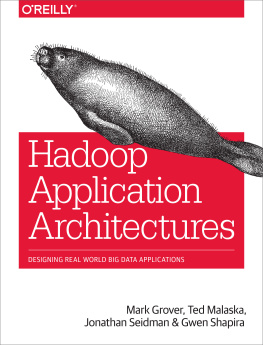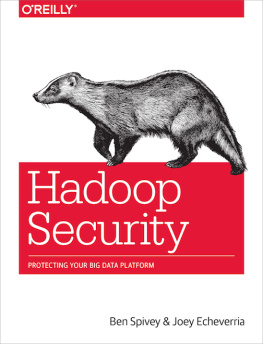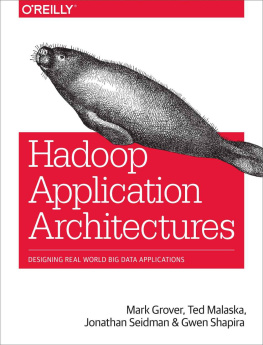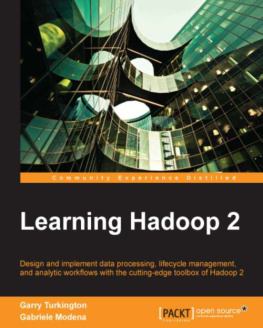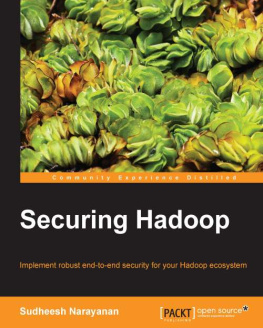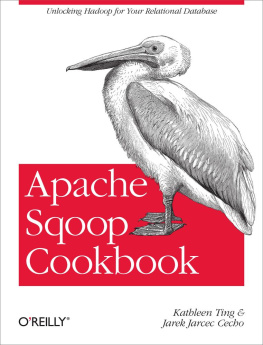Apache Oozie
by Mohammad Kamrul Islam and Aravind Srinivasan
Copyright 2015 Mohammad Islam and Aravindakshan Srinivasan. All rights reserved.
Printed in the United States of America.
Published by OReilly Media, Inc. , 1005 Gravenstein Highway North, Sebastopol, CA 95472.
OReilly books may be purchased for educational, business, or sales promotional use. Online editions are also available for most titles (http://safaribooksonline.com). For more information, contact our corporate/institutional sales department: 800-998-9938 or corporate@oreilly.com .
- Editors: Mike Loukides and Marie Beaugureau
- Production Editor: Colleen Lobner
- Copyeditor: Gillian McGarvey
- Proofreader: Jasmine Kwityn
- Indexer: Lucie Haskins
- Interior Designer: David Futato
- Cover Designer: Ellie Volckhausen
- Illustrator: Rebecca Demarest
Revision History for the First Edition
- 2015-05-08: First Release
See http://oreilly.com/catalog/errata.csp?isbn=9781449369927 for release details.
The OReilly logo is a registered trademark of OReilly Media, Inc. Apache Oozie, the cover image of a binturong, and related trade dress are trademarks of OReilly Media, Inc.
While the publisher and the authors have used good faith efforts to ensure that the information and instructions contained in this work are accurate, the publisher and the authors disclaim all responsibility for errors or omissions, including without limitation responsibility for damages resulting from the use of or reliance on this work. Use of the information and instructions contained in this work is at your own risk. If any code samples or other technology this work contains or describes is subject to open source licenses or the intellectual property rights of others, it is your responsibility to ensure that your use thereof complies with such licenses and/or rights.
978-1-449-36992-7
[LSI]
Foreword
First developed when I was at Yahoo! in 2008, Apache Oozie remains the most sophisticated and powerful workflow scheduler for managing Apache Hadoop jobs. Although simpler open source alternatives have been introduced, Oozie is still my recommended workflow scheduler due to its ability to handle complexity, ease of integration with established and emerging Hadoop components (like Spark), and the growing ecosystem of projects, such as Apache Falcon, that rely on its workflow engine.
That said, Oozie also remains one of the more challenging schedulers to learn and master. If ever a system required a comprehensive users manual, Oozie is it. To take advantage of the full power that Oozie has to offer, developers need the guidance and advice of expert users. That is why I am delighted to see this book get published.
When Oozie was first developed, I was Chief Architect of Yahoo!s Search and Advertising Technology Group. At the time, our group was starting to migrate the event-processing pipelines of our advertising products from a proprietary technology stack to Apache Hadoop.
The advertising pipelines at Yahoo! were extremely complex. Data was processed in batches that ranged from 5 minutes to 30 days in length, with aggregates graduating in complex ways from one time scale to another. In addition, these pipelines needed to detect and gracefully handle late data, missing data, software bugs tickled by black swan event data, and software bugs introduced by recent software pushes. On top of all of that, billions of dollars of revenueand a good deal of the companys growth prospectsdepended on these pipelines, raising the stakes for data quality, security, and compliance. We had about a half-dozen workflow systems in use back then, and there was a lot of internal competition to be selected as the standard for Hadoop. Ultimately, the design for Oozie came from ideas from two systems: PacMan, a system already integrated with Hadoop, and Lexus, a system already in place for the advertising pipelines.
Oozies origins as a second-generation system designed to meet the needs of extremely complicated applications are both a strength and a weakness. On the positive side, there is no use case or scenario that Oozie cant handleand if you know what youre doing, handle well. On the negative side, Oozie suffers from the over-engineering that youd expect from second-system effect. It has complex features that are great for handling complicated applications, but can be very nonintuitive for inexperienced users. For these newer users, I want to let you know that Oozie is worth the investment of your time. While the newer, simpler workflow schedulers are much easier for simple pipelines, it is in the nature of data pipelines to grow more sophisticated over time. The simpler solutions will ultimately limit the solutions that you can create. Dont limit yourself.
As guides to Oozie, there can be no better experts than Aravind Srinivasan and Mohammad Kamrul Islam. Aravind represents the voice of the user, as he was one of the engineers who moved Yahoo!s advertising pipelines over to Oozie, bringing the lessons of Lexus to the Oozie developers. Subsequently, he has worked on many other Oozie applications, both inside and outside of Yahoo!. Mohammad represents the voice of the developer, as a core contributor to Oozie since its 1.x days. Mohammad is currently Vice President of the Oozie project at the Apache Software Foundation, and he also makes significant contributions to other Hadoop-related projects such as YARN and Tez.
In this book, the authors have striven for practicality, focusing on the concepts, principles, tips, and tricks necessary for developers to get the most out of Oozie. A volume such as this is long overdue. Developers will get a lot more out the Hadoop ecosystem by reading it.
Raymie Stata, CEO, Altiscale
Preface
Hadoop is fast becoming the de facto big data platform across all industries. An entire ecosystem of tools, products, and services targeting every functionality and requirement have sprung up around Hadoop. Apache Oozie occupies an important space in this ever-expanding ecosystem. Since Hadoops early days at Yahoo!, it has been a natural platform for Extract, Transform, and Load (ETL) and other forms of data pipelines. Without a mature workflow management and scheduling system, implementing such pipelines can be a challenge. Oozie satisfies these requirements and provides a viable tool to implement complex, real-world data pipelines. In this book, we have tried our best to introduce readers to all the facets of Oozie and walk them through the intricacies of this rather powerful and flexible platform.
Software workflow systems are ubiquitous and each system has its own idiosyncrasies. But Oozie is a lot more than just another workflow system. One of Oozies strengths is that it was custom built from the ground up for Hadoop. This not only means that Oozie works well on Hadoop, but that the authors of Oozie had an opportunity to build a new system incorporating much of their knowledge about other legacy workflow systems. Although some users view Oozie as just a workflow system, it has evolved into something more than that. The ability to use data availability and time-based triggers to schedule workflows via the Oozie coordinator is as important to todays users as the workflow. The higher-level concept of bundles, which enable users to package multiple coordinators into complex data pipelines, is also gaining a lot of traction as applications and pipelines moving to Hadoop are getting more complicated.
We are both very lucky to have been involved in Oozies journey from its early days. We have played several roles in its evolution, ranging from developer, architect, open source committer, Project Management Committee (PMC) member, product manager, and even demanding customer. We have tried to leverage all of that perspective to present a comprehensive view of Oozie in this book. We strongly believe in the vision of Oozie and its potential to make Hadoop a more powerful platform. Hadoops use is expanding and we notice that users want to use it in smarter and more interesting ways. We have seen many projects in the past getting bogged down with writing, operating, and debugging the workflow system meant to manage the business application. By delegating all of the workflow and scheduling complexities to Oozie, you can focus on developing your core business application.

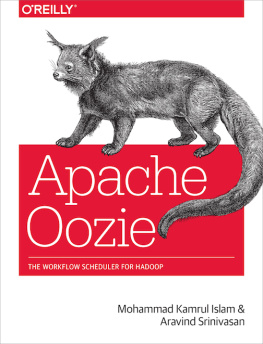
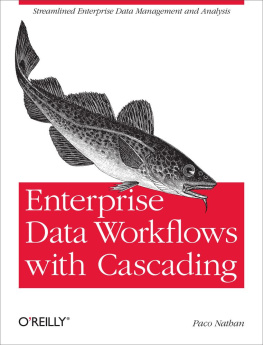
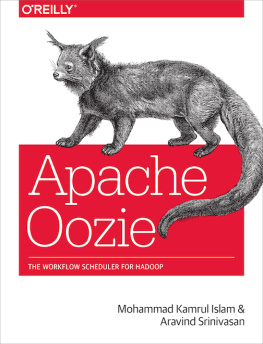
![Echeverria Joey - Hadoop security: [protecting your big data platform]](/uploads/posts/book/172570/thumbs/echeverria-joey-hadoop-security-protecting-your.jpg)

